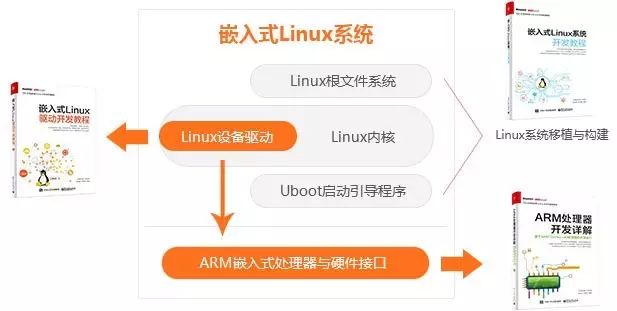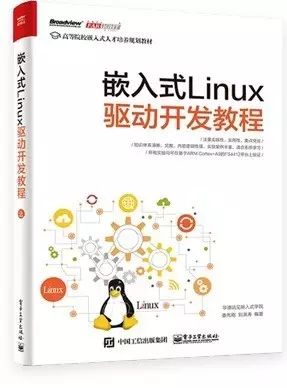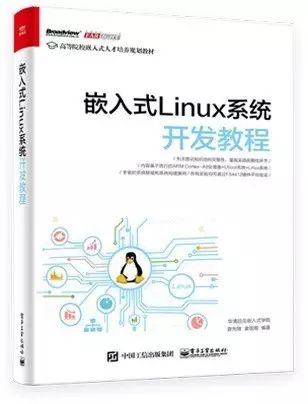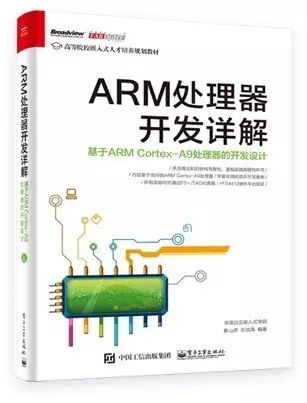Linux driver development requires not only mastery of the Linux operating system kernel and driver framework knowledge but also an understanding of low-level ARM processors and interface technology, bootloader Uboot, Linux system porting, and file system deployment. Only by systematically mastering these foundational knowledge areas can one integrate and truly master Linux device driver skills.
Currently, most textbooks on the market focus on a single direction and are insufficient to meet developers’ needs. Therefore, Hua Qing Yuan Jian has exclusively planned a complete set of three textbooks for reference and study.

Embedded Linux Driver Development Tutorial

Features:
Emphasizes practicality and applicability, highlighting key points.
Knowledge system is clear and complete, with strong logical content and rich experimental cases.
All experiments can be verified on the FS4412 platform based on ARM Cortex-A9.
Content Summary:
The “Embedded Linux Driver Development Tutorial” combines numerous examples to comprehensively and in detail explain Linux device driver development on hardware teaching platforms based on the ARM Cortex-A9 quad-core processor Exynos4412 and PCs. Major topics include setting up the development environment, kernel modules, character device driver framework, advanced I/O, interrupt and time management, mutex and synchronization, memory and DMA, Linux device model, driver examples for peripherals, bus-type device drivers, block device drivers, network device drivers, and kernel debugging techniques. Each knowledge point has a corresponding typical example, most of which can run both on the embedded platform mentioned above and on a PC. Additionally, the “Embedded Linux Driver Development Tutorial” introduces some new features of the new kernel, such as high-resolution timers, DMA engine for embedded platforms, and device trees. Extensive kernel source code analysis is included in areas requiring special attention, allowing readers to quickly and deeply understand the development of Linux device drivers.
The “Embedded Linux Driver Development Tutorial” can serve as a textbook for embedded Linux device driver development courses in universities’ electronics, communications, computer, and automation majors, and can also be referenced by embedded Linux driver developers.
Embedded Linux System Development Tutorial

Features:
Focuses on the completeness of theoretical knowledge structure and emphasizes the foresight of practical segments.
Rich cases of system porting and system construction.
Content is based on popular ARM Cortex-A9 processors + Uboot system + Linux system.
All experiments can be verified on the FS4412 hardware platform.
Content Summary:
The “Embedded Linux System Development Tutorial” combines numerous examples to comprehensively and in detail explain the ARM processor and embedded Linux system development on hardware teaching platforms based on the ARM Cortex-A9 quad-core processor. Major topics include introduction to ARM processors and common instructions, Linux programming environment, cross-development environment, U-Boot boot process and porting, Linux kernel configuration, compilation and porting, Linux startup process, introduction to ARM’s Linux device tree, porting of network card drivers, SD/eMMC drivers, USB host controller drivers, and LCD drivers, creation of root file systems and image flashing, and Qt porting for version 5.4.2. The porting-related content not only provides methods and steps for porting but also explains why these steps are necessary.
Detailed ARM Processor Development

Features:
Focuses on the completeness of theoretical knowledge structure and emphasizes the foresight of practical segments.
All experiments can be verified through the FS-JTAG emulator.
Content is based on popular ARM Cortex-A9 processors, with rich and practical project development cases.
All experiments can be verified on the FS4412 hardware platform.
Content Summary:
As a 32-bit high-performance, low-cost embedded RISC microprocessor, ARM has become the most widely used embedded processor. Currently, the Cortex-A series processors have captured a large portion of the mid-to-high-end product market. This tutorial comprehensively introduces the architecture, programming model, instruction set, and development environment of the Cortex-A9 processor, while detailing system design and related interface technology based on the Cortex-A9 application processor, the S5PV210. The interface technologies cover I/O, interrupts, serial ports, memory, PWM, A/D, DMA, IIC, SPI, Camera, LCD, etc., and provide numerous experimental examples.
Click to read the original text: Worried about whether you can do it with zero foundation? See the difference in 2 weeks!
【Recommended Recent Articles】
1.Ordinary university graduates earn 12K salary after learning embedded.
2. Girlfriend breaks up after earning 4K a month; how to choose future work?
3.Programmer’s comic after coding, feels relatable.
4.Tuition fees drop as summer vacation approaches; hundreds of gigabytes of free resources available!
5.After “Code SOS”, the programmer successfully proposed with 40 lines of code!
6.Huawei senior posted a photo in the circle of friends, clearly trying to provoke jealousy.
New chapter in the May high salary employment list; monthly average salary in Beijing, Shanghai, Guangzhou, and Shenzhen breaks 11,494 yuan.
Reply “0-71” to any number to view selected past articles!
Long press the QR code for 3 seconds
Make friends with 100,000 programming experts
Daily delivery of valuable content
(Remember to scan the QR code!)

Or search for Hua Qing Yuan Jian on WeChat to follow us.
Free lectures | Content sharing | Programmer lifestyle | Employment recruitment
High-endITEmployment training experts
m.embedu.org